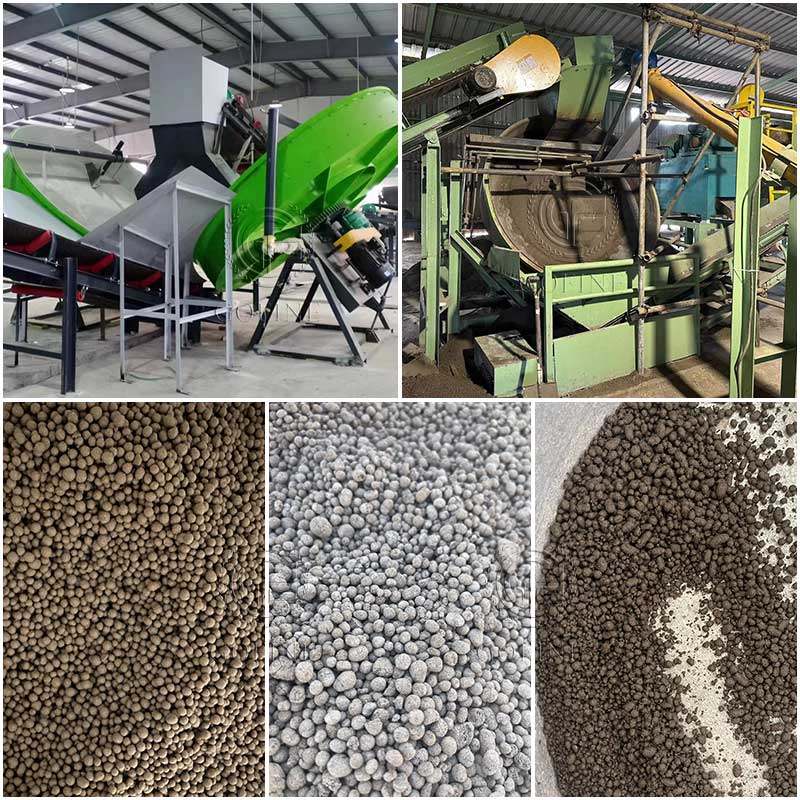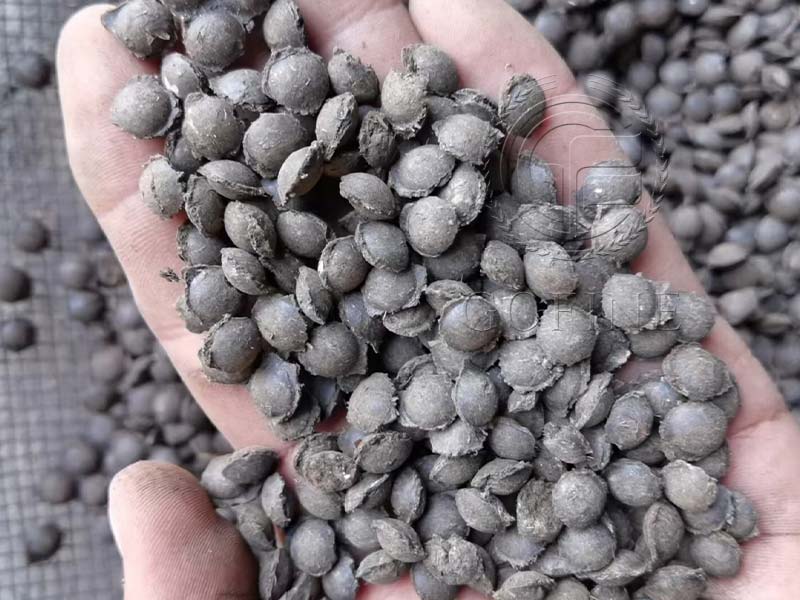Release time:March 27, 2025
Converting cow dung into organic fertilizer pellets is an environmentally friendly and efficient way of resource utilization, which can reduce pollution, improve soil structure and increase crop yields. The following is a detailed process flow and precautions:

1. Key steps in converting cow dung into organic fertilizer pellets
Raw material pretreatment
Dehydration: Fresh cow dung has a high moisture content (about 70%~80%), and it needs to be reduced to 50%~60% by mechanical dehydration (such as screw extrusion dehydrator) or natural drying.
Remove impurities: Separate stones, plastics, hair and other debris from cow dung to avoid clogging equipment or affecting pellet quality.
Fermentation and decomposition (core step)
Composting fermentation:
Mix the dehydrated cow dung with auxiliary materials (such as straw, rice husks, fungus residue, etc.) in proportion, adjust the carbon-nitrogen ratio (C/N≈25~30:1), and promote microbial decomposition.
Add fermentation agents (EM bacteria, Bacillus subtilis, etc.) to accelerate the decomposition of organic matter and kill pathogens and insect eggs.
Composting method: Fermentation in strips, troughs or reactors, with regular turning of the pile (once every 3 to 5 days) to increase oxygen and dissipate heat.
Fermentation conditions:
Temperature: 55~65℃ for 7~15 days (sterilization and egg killing in the high temperature stage).
Humidity: 50%~60%, watering is required if it is too low, and turning of the pile is required if it is too high.
Maturity signs:
The material is loose and odorless, dark brown;
The temperature drops to ambient temperature and is stable;
The pH value is neutral (6.5~8.0).
Crushing and blending
The fermented cow dung is processed by a crusher to ensure uniform particle size (1~3mm).
Add nutrients (such as phosphate rock powder, wood ash) or functional bacteria (such as nitrogen-fixing bacteria) as needed to improve fertilizer efficiency.
Granulation and molding
Double-roll extrusion granulation (recommended process):
The crushed cow dung is pressed into granules (commonly 3~8mm in diameter) through a mold under high pressure using a double-roll extrusion granulator.
No additional heating is required, relying on mechanical force to form and retain the activity of organic matter.

Other optional processes:
Disc granulation: requires the addition of a binder (such as bentonite), suitable for small-scale production;
Drum granulation: suitable for large-scale continuous production, but with high energy consumption.
Drying and screening
Drying: The moisture content of the particles needs to be reduced to ≤15%, and natural drying or low-temperature drying can be used (to avoid high temperature damage to beneficial bacteria).
Screening: Remove the broken pieces and oversized particles, and qualified particles enter the packaging stage. The broken materials can be recycled for granulation.
Packaging and storage
Sealed moisture-proof packaging (such as woven bags, PE film bags), marked with nutrient content and instructions for use.
Store in a cool and dry place to avoid exposure to the sun or moisture agglomeration.